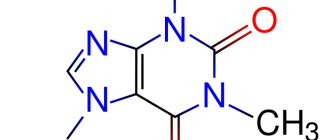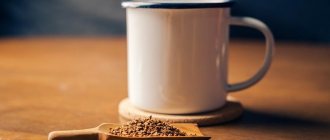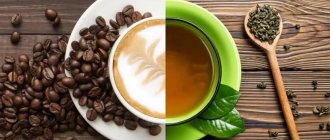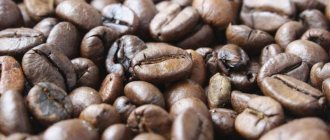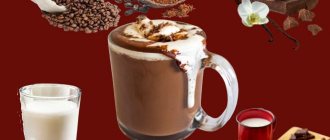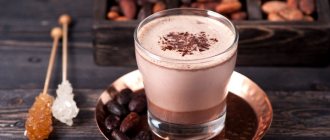What is cocoa made from?
Chocolate tree
A drink called “cocoa” is made from cocoa beans. These same fruits are the main ingredient in creating chocolate.
Cocoa beans grow on trees of the mallow family. This evergreen tree is called Theobroma.
In our country it is customary to simply call it a chocolate tree. The chocolate tree is native to the subequatorial regions of South America.
The cocoa tree is also found in its wild natural form in Mexico and Central America. The plant can reach 12 meters in height.
The fruits of the chocolate tree ripen not on the branches, but directly on the trunk. They are shaped like a huge lemon or melon.
Fruit ripening time is 4 months. Each fruit contains from 20 to 60 seeds - cocoa beans.
The chocolate tree is grown in subequatorial countries. Blooms and bears fruit all year round.
The leading countries producing cocoa beans are: Cod-Divoire, Indonesia, Ghana, Nigeria, Cameroon, Brazil, Ecuador and Togo.
Other cocoa-growing countries include Papua New Guinea, the Dominican Republic, Colombia, Peru, Mexico, Venezuela and Malaysia.
Thanks to the Aztecs for a sweet childhood
The word cocoa itself comes from the Aztec language, and in the original it sounds like “kakahuatl”. By the way, according to historical information, the Aztecs borrowed this word from the Mayan tribe, who in turn “appropriated” it from the Olmecs. That is, today we will no longer be able to determine who first understood the value of the original chocolate tree pods and learned how to process them. But in any case, modern sweet tooths are grateful to their ancestors, who managed to extract such exquisite and healthy raw materials from seeds.
By the way, you can enjoy “fruits” not only by taste, but also visually, because they look very original. But the flowers of the chocolate tree are especially beautiful, attracting both with their appearance and such a familiar sweet aroma.
Return to content
Useful properties of cocoa
About 300 different substances have been found in cocoa beans.
It is this fact that makes this product unique and very useful for the human body.
Cocoa contains a rich vitamin and mineral complex, vegetable protein, unsaturated fatty acids and other components.
This is a very high-calorie product. 100 grams of cocoa can contain from 200 to 400 kcal. It perfectly saturates the body and charges it with energy for the whole day.
However, for those who want to lose weight, it is better to limit the number of cups of this delicious drink you drink.
Cocoa is very beneficial for blood vessels. It is rich in bioactive components that prevent platelet aggregation.
The antioxidant properties of cocoa are unique; they are more effective than even orange juice, apples and tea.
Cocoa can stimulate the production of endorphins in the body - hormones of joy.
Cocoa promotes rapid restoration of muscle tissue, has a beneficial effect on the skin, and also reduces the risk of diabetes, cancer, stomach ulcers, stroke and heart disease.
Caffeine addiction
Excessive coffee consumption can lead to caffeine addiction. Its symptoms:
- Anxiety,
- Irritability,
- Tachycardia,
- stomach disorders,
- Facial redness,
- Frequent urination.
In the most advanced cases, caffeine addiction can manifest itself in confusion of speech and consciousness, photophobia, and tremors of the limbs. When intoxication is repeated daily, the body adapts to a new regime. The main positive property of caffeine – the feeling of cheerfulness – disappears. A person still drinks coffee because without it he is unable to do even simple things. A person addicted to caffeine constantly feels weak and depressed. A severe headache in the middle of the forehead is also added.
Getting rid of caffeine addiction is quite simple - negative symptoms when giving up caffeine-containing products disappear within a week at most. In the first days, you need to understand that there will be a loss of strength, headache, and increased drowsiness.
After eliminating the negative symptoms, you need to limit your coffee consumption, preferably to one cup per day. Any type of addiction may indicate the presence of psychological problems, so it is worth visiting a psychologist.
Harmful properties of cocoa
Despite the huge list of miraculous properties, drinking this drink can be fraught with serious danger.
But it lies not in the properties of cocoa beans, but in their quality and methods of cultivation and processing.
The fact is that when industrially growing this product, careless producers often use large amounts of pesticides and chemical fertilizers.
Cocoa is the world's leading crop in terms of the amount of pesticide treatment.
Another danger lies in the poor sanitary conditions of most cocoa-growing countries.
Therefore, when choosing a product, pay attention to its quality.
Visually, cocoa powder should have a brown color without any impurities or inclusions. When rubbed between your fingers, no lumps should form.
Natural cocoa must contain at least 15% fat. It should not leave sediment when preparing the drink.
Also, when buying cocoa, pay attention to the country of origin. Do not buy a drink produced in countries where the chocolate tree does not grow.
Safe daily requirement
Drinking caffeine triggers natural processes and promotes the production of hormones, including dopamine, which is responsible for happiness. But in order for taking the alkaloid to have a positive effect on your health, you must strictly follow the standards recommended by doctors.
The safe daily requirement of caffeine is no more than 300 mg per day. This amount is equivalent to 3 small cups of coffee.
People suffering from diabetes, cardiovascular disorders and other chronic diseases should reduce their caffeine intake to 100 mg per day.
Does cocoa have caffeine?
Is there caffeine in cocoa powder?
To the question of whether there is caffeine in cocoa, there is only one answer - yes, there is!
But its amount is relatively small, on average it is 0.2%.
And since the attitude towards caffeine is currently ambiguous: some categorically claim that it is harmful, others have the opposite opinion, you will have to decide whether this drink is suitable for you yourself.
However, the very fact of its presence in this drink should make people for whom caffeine poses a potential danger be more careful when using cocoa.
Do not rush to give up your favorite drink just because you discovered the presence of caffeine in it.
It’s better to study in detail the properties of this controversial component, and then be sure to compare its content in different products.
So, children need to move as much as possible?
Yes. But there are other ways of bodily self-knowledge, for example singing. When a child sings, his brain must masterfully control the vibration of his vocal cords to produce sounds with exquisite precision. In addition, singing is a complex combination work. After all, you need to keep the whole melody in your head in order to play it in the correct sequence. And with choral singing, the child learns to act in unison with others - this is a prerequisite for the development of social skills. At the same time, he makes an amazing discovery: it turns out that when you eat, you don’t feel fear! Now neuroscientists have already found out that during singing the brain is not able to activate the fear center. This is why people have hummed for centuries when they walk through a dark forest.
The effect of cocoa on the body
When caffeine enters the human body, it stimulates the central nervous system, accelerates the pulse, dilates blood vessels, and makes the heart work more actively. Based on these properties, it is widely used in medicine.
Caffeine is part of painkillers; it is used to stimulate the respiratory and cardiac organs, and is prescribed when it is necessary to increase mental or physical activity.
As you can see, caffeine has benefits for a certain category of people. Therefore, everyone should not give up cocoa because of the content of this element.
It is fraught with danger only for people with increased excitability, insomnia, certain heart diseases, glaucoma, the elderly, and for patients with polycystic disease.
In all other cases, moderate consumption of caffeine-containing foods is not dangerous.
Decreased pressure
Drinking 2 cups of the drink serves as an excellent prevention of stroke and reduces weather dependence, due to the presence of flavonoids. The level of high-density lipoproteins decreases, as a result of which platelets do not stick together, and the risk of thrombosis is reduced. The presence of theobromine increases the resistance of the heart muscle to pressure surges.
general information
At first glance, it seems that these drinks are very close. They even complement each other perfectly. Moccacino is one of the most popular types of coffee and is a mixture of an invigorating drink, milk and cocoa. Both of these plants are grown in the tropics and are sold as beans.
According to legend, coffee was discovered by Ethiopian shepherds who noticed that goats jumped all night as soon as they ate the berries of the coffee tree. One shepherd shared his life hack with local priests, who tried it before all-night vigils.
There are four types of coffee: Arabica, Robusta, Liberica and Excelsa. But the most popular are the first two. Arabica is considered more beneficial, while robusta contains more caffeine and, therefore, puts more strain on the nervous system.
There are several types, differing in the degree of “coffee content” and harmfulness:
- Coffee brewed in a Turk or prepared using a coffee machine. To produce a quality drink, you need to buy a model with a five-figure price. A Turka costs a penny, and is capable of making a good drink (provided that the person knows how to prepare it).
- Technical. This includes instant (with the exception of some types, which are really good) and drinks from the machine.
- Coffee "Galka". A drink that is not coffee at all. This is a substitute that is used by people who want to stop drinking this drink.
- McCoffee. A 3-in-1 drink, where instead of milk you use dry protein, sugar - sweeteners, and about half a serving of coffee itself. That is, no vigor, no taste, just pure harm. He's incredibly harmful.
The most useful option is ground. All others are of dubious benefit. Cocoa is a kind of coffee substitute for children. Often adults take an invigorating drink for themselves, and hot chocolate for children.

